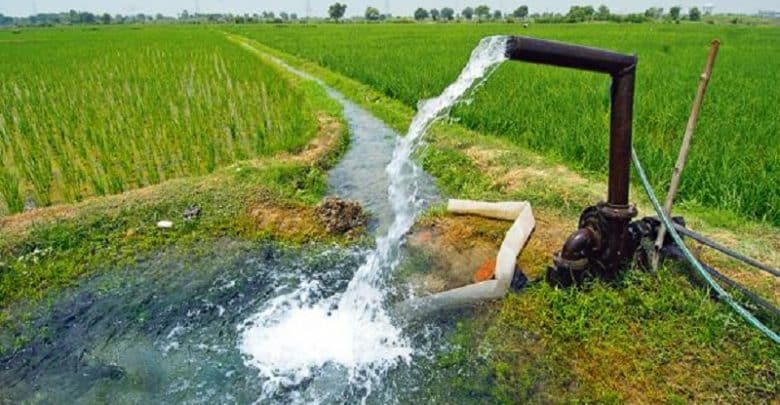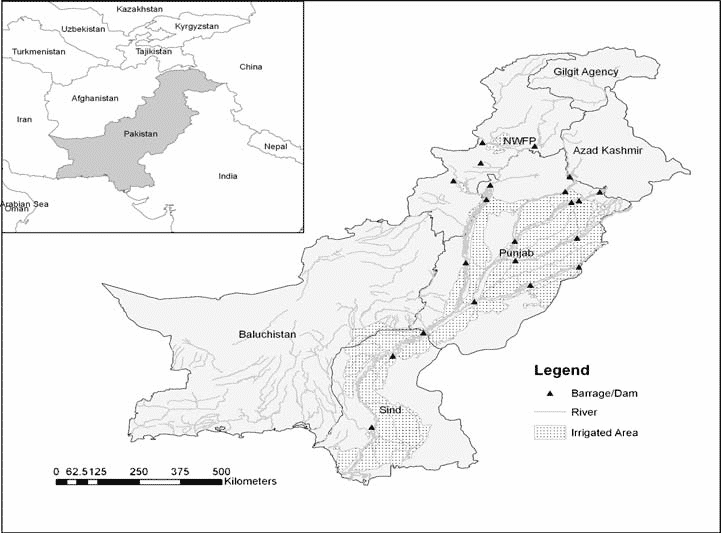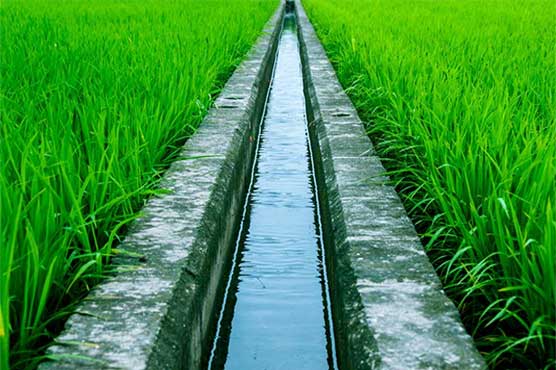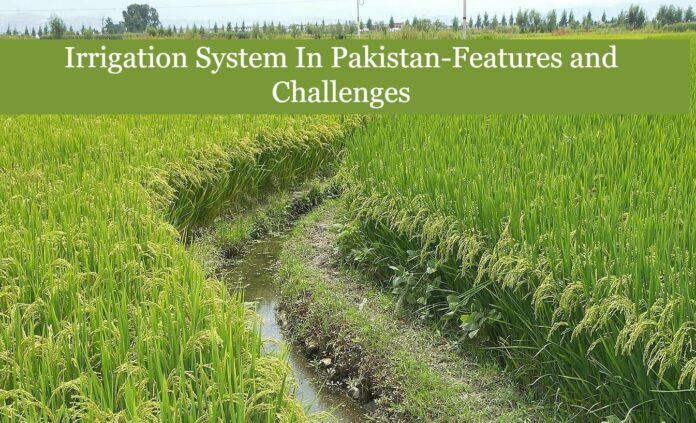The irrigation system is responsible for more than 90 percent of the country’s agricultural, which accounts for a significant portion of the country’s GDP. Agriculture, like in many other nations across the world, is the backbone of the Pakistani economy, and the irrigation system is a key, and in some cases, the sole, source of food production.
Water is one of the world’s most scarce and valuable resources, and it is also one of the most easily depleted. Pakistan is an agriculture based country whose economy is heavily reliant on irrigation. There is no way to ignore the importance of the indus basin irrigation system of pakistan, which is enormous in both its normal and strategic significance.
Fortunately, like its gas, oil, and coal resources, Pakistan is also rich in fertile land, and its irrigation is regarded to be one of the world’s greatest, including the Indus River, which is one of Asia’s longest rivers, among others.
Some of the most serious irrigation difficulties in Pakistan, as well as a handful of potential solutions to these problems, are discussed in this article, as well as the possible obstacles and hindrances that prohibit the authorities from establishing a good, healthy, and long-lasting irrigation system.
Irrigation system of Pakistan:

Agriculture activities such as crop farming and horticulture in Pakistan are totally dependent on irrigation for their success. Irrigation is used to cultivate around 80 percent of the country’s cultivable land. Furthermore, Pakistan’s irrigation system is often regarded as one of the best in the world, having progressed from traditional lift irrigation to modernized canal systems throughout the centuries.
canal irrigation system of pakistan, lift irrigation, dams, and barrages are just a few of the ways that are now being used in the country. Indus basin irrigation system of pakistan is very famous all around the world
It goes from Khyber Pakhtunkhwa (KP) through Punjab and Sindh, and there is a great deal of diversity in meteorological characteristics, such as rainfall and temperature, along the way.
Unfortunately, the irrigation infrastructure in Pakistan is in serious trouble. A burgeoning agriculture sector can be found in emerging countries such as Pakistan. The water availability has been ensured for many years by the construction of many man-made structures, including a complex and extensive irrigation system that is considered to be one of the best developed in the history of humanity up until this point.
The gap between the presence of a network and its effective use is expanding, and the system’s utility and production are being jeopardized as a result.
Following is the image of Irrigation system of Pakistan map, with provincial boundaries and Indus basin irrigation network.

Brief History of Pakistan’s Irrigation System:
In 1947, when the Indian subcontinent was divided into two independent states, the irrigation system of Pakistan was born, and like many other issues, it gave birth to the water issue as well, which was resolved in 1960 through international mediation when both countries signed the “Indus Water Treaty.” The irrigation system of Pakistan is one of the most important infrastructure assets in the country, accounting for several billion dollars in investment.

According to the stipulations of the treaty, India was granted full exclusive usage of the Eastern Rivers, which were named Sutlej, Bias, and Ravi, in addition to other benefits. The Jhelum, the Indus, and the Chenab are three rivers in Pakistan’s western region that are under its sovereignty.
Unfortunately, a treaty made in the 1960s stipulated that India could use the water from Pakistani-controlled rivers for agriculture and power generating purposes, despite the fact that Pakistan was downstream of the rivers. Because the basin of the largest Pakistani-controlled river is located in India, there is a possibility that India will have an impact on Pakistan’s irrigation resources, as he did during the wars of 1965 and 1971.
ReSources of Irrigation System in Pakistan:
The two primary sources of water in Pakistan are surface water and ground water, respectively.
Surface water resources:
The Indus River is an important supply of water in Pakistan, and it is subdivided into several branches downstream, including the Jhelum, Chenab, Ravi, Beas, and Sutlej rivers, as well as the Kabul River, which flows into Afghanistan.
The Jhelum, Indus, and Chenab rivers provide 165 billion cubic meters of water each year, while the Beas, Ravi, & Sutlej rivers contribute 10 billion cubic meters per year. Unfortunately, around 12 Bm3 of water is wasted in the system, which may be due to seepage, theft, and other factors.
Approximately 70% of water volume (125/175 Bm3) is used for irrigation, with the remaining water (approximately 35 Bm3) being ‘wasted’ into the Arabian Sea.
Ground water resources:
Because of the wide range of rainfall duration, intensity, and timing that can be observed throughout the monsoon season, it is extremely challenging to plan and manage flood and irrigation operations for both healthy &unhealthy rivers.
Another source of replenishment is the fast-moving water on the hill, which is called as ‘torrent’ in English. It is estimated that there are 14 separate ‘hilly-torrents,’ with a total volume of 23436.15 Bm3.
Challenges and Issues in Irrigation System of Pakistan:
Water economy is a word that is commonly used in Pakistani agriculture because the crops are heavily reliant on water. In order to ensure the development and effective functioning of this vast system, it is imperative that existing infrastructure be maintained, and new infrastructure be constructed.
In Pakistan, the user is responsible for recovering the capital costs related to development of irrigation systems. The rates for operation and maintenance are linked to the water costs gathered by the regional governments, however because to the ineptitude and malpractice of the government institutions, these charges are insufficient to meet the needs of the population.

Each province has a shortfall in funds of more than 30 percent of its total funds. The operation and maintenance of the system are also the responsibility of provincial and federal entities.
Pakistan is a densely inhabited agriculture-based country and one of the finest irrigation systems in the world, but it nevertheless has a backward agricultural environment. Most of the population (more than 65 percent) is dependent on the attachments to agricultural fields or industrial enterprises.
Punjab is Pakistan’s most populous province and the country’s most populous city. Punjab’s irrigation system is not very well developed. The current irrigation system has been in use for nearly a century. The management of the current irrigation system has become a significant challenge as the population has grown.
The burden on the restricted irrigation system is likewise growing increasingly burdensome, and the situation is becoming increasingly critical. Problems with the administration of Pakistan’s irrigation system include both social and technical issues. The mishandling of the irrigation system has resulted in a significant decrease in agricultural yield.
The following are some of the most substantial cuts in the irrigation system of Pakistan:
Wastage of Water:
Pakistan is squandering a lot of water. Farmers still employ antiquated flood water irrigation systems, wasting 50-60% of water. The recent floods gave Pakistan a huge amount of water, but the absence of water reservoirs has wasted it.
Many countries have adopted a new irrigation method called drip irrigation. This hardly conserves water but also offers plants the water they need. But Pakistan hasn’t heard of it.
logging and salinity of Water:
Water logging and salinity are becoming more severe with each passing day. No action has been made by the government of Pakistan to fix this situation.
Because of the diminishing storage capacity of dams as a result of silt deposition, farmers are installing an increasing number of tube wells to water their crops to compensate. Another factor for the expansion of salinity in the major parts of Punjab & Sindh is due to the evaporation of groundwater.
Scarcity of water as a result of India’s Expedition:
India, Pakistan’s arch-enemy since the beginning of time, has constructed a series of dams in violation of the Water Act of 1960. Pakistan’s rivers have been dried up as a result of India’s actions.
In recent years, the average yearly flow has plummeted to an alarmingly low level. Whereas the intended crop intensity of Pakistan’s irrigation system ranged from 60 to 70%, today’s cropping intensity has surpassed the level of 120 percent, indicating an increase in the country’s water consumption.
Insufficient funds:
Provincial governments are responsible for the management of water resources in Pakistan. Although a significant portion of the entire budget is set aside for irrigation & canal construction, this distribution of funds is insufficient to handle all of the issues related to irrigation.
It is expected that the disparity between required and allocated amounts is greater than 24 percent. As a result of this circumstance, the canal system has begun to deteriorate further.
Province-to-province clashes over the Kalabagh Dam (KBD)
The failure to construct additional water dams in Pakistan has figured prominently in exacerbating the country’s irrigation issues.
If Pakistan had constructed the Kalabagh dam, all of the country’s irrigation problems would have been alleviated. Except for Punjab, no other province is willing to move through with the KBD project.
Lack of dams:
More dams on the Indus, Jehlum, and Chenab rivers are required in Pakistan. Not only will this increase the available capacity of water, but it will also reduce a per acre pricing of all crops as a result.
Due to the reduced use of tube well water for irrigation on areas that are projected to become salinized as a result of this legislation, the likelihood of salinity on the fields is reduced as well.
Wrapping Up:
If water management is to improve, a paradigm shift in government policies, as well as changes in the legal and regulatory framework, are required. If these changes are implemented effectively, they can result in significant increases in agricultural productivity.
Because of the major challenges to the irrigation system, it has become necessary to make intelligent use of the water resources that are accessible. As a result, the planning, construction, and management of land regions and irrigation systems must take into consideration the new difficulties.
One of the most important objectives in achieving the generally accepted method of integrated water resources management is the support of many people and management of irrigation and drainage systems.


